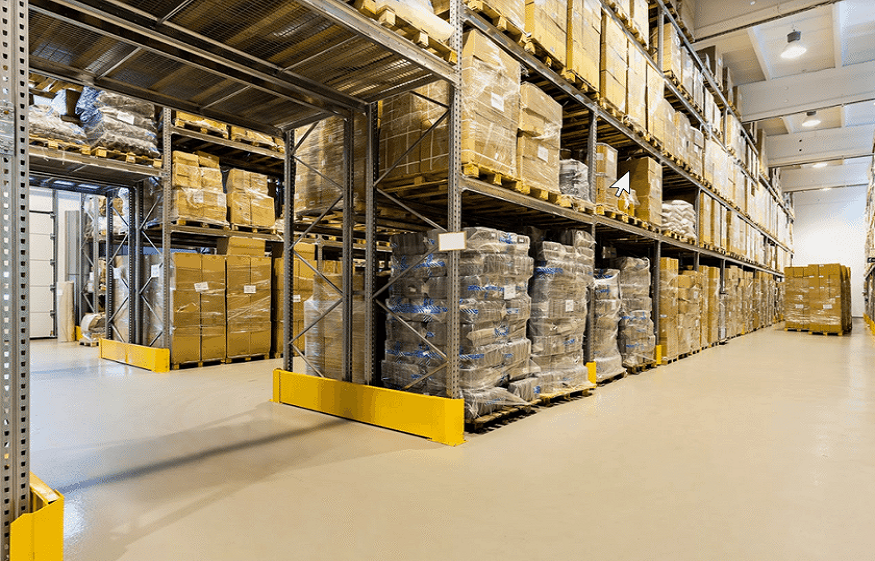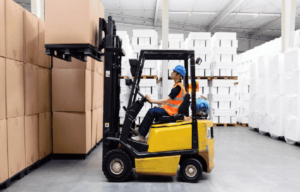The Evolution of Warehouse Equipment
3 min read
Warehouse equipment is critical to a production line. In the present fast-paced industrial environment, warehouse appliances are integral in facilitating the efficient movement, storage, and handling of goods. We invite you to read this detailed blog post about the evolution, technology, and best practices in warehouse equipment, filled with tons of information and insights regarding how companies may optimize their warehouse operations with equipment.
Here, we also mention trusted suppliers, such as Plastics2go, whose product is a clear testament to quality and innovation within the warehouse equipment industry.
Adaptations in Warehouse Equipment
Traditionally, warehouse operations have changed from simple to complex storage demands. The warehouses of early civilization started as simple sheds with very limited mechanization but later as their industries flourished with the industrial revolution, the need for a more modern system became necessary and systems began to include specialized equipment. The modern warehouse of today is a combination of advanced tech and solid physical infrastructure. Robotics, automation, and material handling innovations have transformed warehouse operations to increase throughput and accuracy.
E-commerce and globalization have played a crucial role in the shift of warehouse equipment. With organizations growing, reaching across the globe and needing support for higher volumes and multiple product lines, systems need to be more efficient. This change has pushed manufacturer to innovate and build not only equipment adapted for high volume requirements but also for versatility and furthermore scalability. Examples of which are automated guided vehicles (AGVs), conveyor systems, and automated storage and retrieval systems (AS/RS) that are essentials of everyday warehouse operations.
Material Handling Equipment — Its Significance
Warehouse operations rely heavily on material handling equipment. It encompasses everything that is used to move, store, control, and protect materials throughout manufacturing, distribution, consumption, and disposal. This type includes devices like forklifts, pallet jacks, conveyors, automated guided vehicles, and manual handling devices. Whether done in a warehouse or a factory, handling materials efficiently moves your goods from point to point without additional delays or risks, optimizing productivity.
Improving safety, efficiency, and ergonomics has always been at the design heart of material handling equipment. The other major advancement over the years has been the improvements in technology that have led to equipment that is not only tougher, but more user friendly. Designed ergonomically, forklifts and pallet jacks reduce worker fatigue and injuries. Moreover, groundbreaking advancements in sensor technology and real-time data tracking have transformed how warehouses monitor and manage their inventory.
Plastics2go and other manufacturers have led the production of high-quality plastic components used in various material handling equipment. Their offerings are characterized by durability, low maintenance, and affordability, this makes them a popular choice for many warehouses in the process of upgrading their infrastructure.
Automation in Warehouse automation
Automation is re-imagining every facet of warehouse management, from inventory control to fulfilment. By using automated systems, the reliance on manual labour is significantly reduced, which in turn decreases human error risk and increases efficiency. Innovations in technology like robotics, artificial intelligence (AI), and the Internet of Things (IoT), are being adopted into warehouse processes to develop adaptive intelligent systems that can adjust based on real-time demands.
A key example of automation working full-time are automated storage and retrieval systems (AS/RS). The systems rely on robotics to transport products from storage to picking locations quickly and accurately. With integrated AI, these systems can optimize routing and scheduling, ensuring that the highest priority orders are fulfilled first. IoT empowered sensors use to monitor, real-time enhance storage conditions such as temperature, humidity, and other environmental factors
So have warehouse management systems (WMS) that now feature advanced algorithms to handle complex inventory dynamics better. These systems display information of the warehouse operations in real time so the managers can take quick, informed decisions.
Conclusion
The transformation of warehouse equipment from simple storage systems to advanced automated systems speaks to the central role of technology and innovation within the supply chain. This means that with new material handling equipment, automation, and added safety features companies can expect maximum efficiency and reliability like never before.
By investing strategically, being mindful of the safety and sustainability of the materials you use, and collaborating with trusted suppliers of products across key industry sectors, like Plastics2go and Castors2go, your warehouse can emerge as a cutting edge operation that satisfies the needs of a globalized economy, allowing your company to flourish for decades to come.







